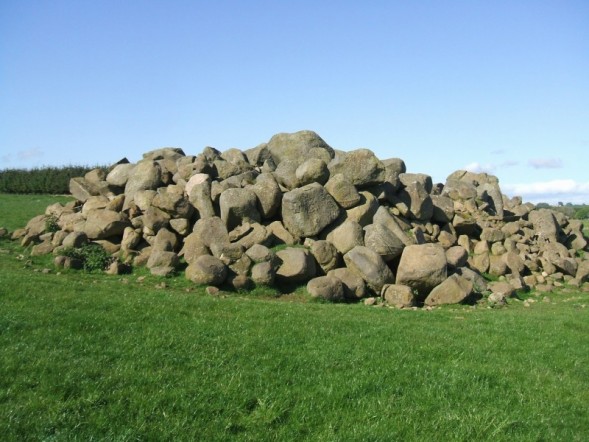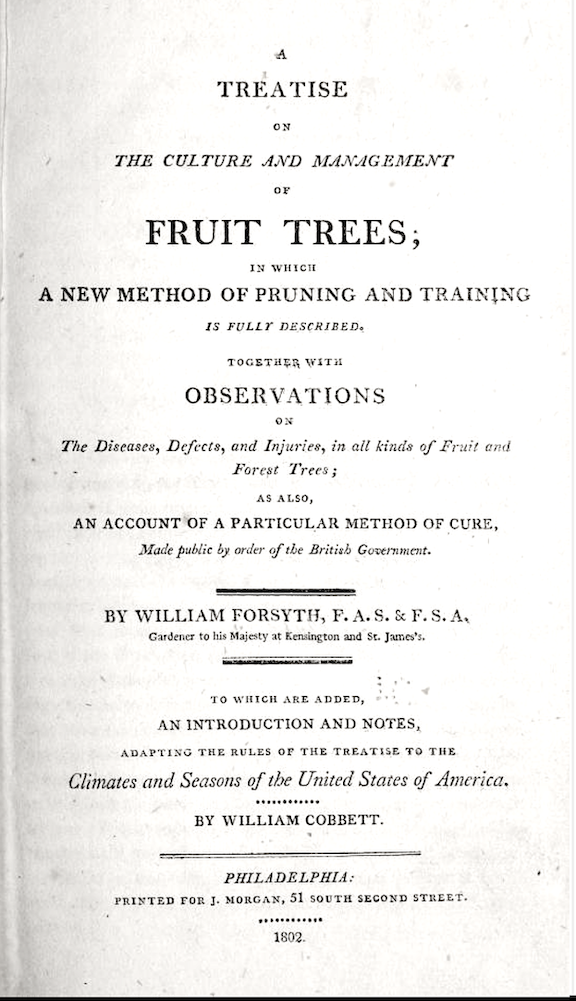This is the springtime installment of our random, look-behind-the-scenes of the plant world blog post. In this episode we’ll take a look at William Forsyth, a gud Scottish horticulturist.

William Forsyth was born in 1737 in Old Meldrum, Aberdeenshire in northeast Scotland. In 1763 he moved to London to work at Syon Park House for the Earl of Northumberland. After that gig he transferred to the Chelsea Physic Garden and trained as a gardener under Phillip Miller. He eventually took over the head gardener position in 1771 and held that post for several years. Forsyth was quite a “plant nerd” who enjoyed exchanging plants with other botanical gardens. He greatly increased the diversity of horticultural collections throughout Britain and Europe with his avid plant trading.
- In 1779 he was appointed superintendent of the royal gardens at Kensington and St. James’s Palace and held this position until his death.
- He was one of the original members of the Royal Horticultural Society which held its first meeting on March 7, 1804.
- Forsyth died on July 25, 1804.
Always a gardener willing to try new things, Forsyth created one of the first known rock gardens in gardening history in 1774 while curator of the Chelsea Physic Garden. He collected over 40 tons of assorted rock from near the Tower of London, included flint and chalk from nearby downlands (an open area of chalk hills) and threw in some pieces of Icelandic lava. Unfortunately the garden didn’t produce as hoped and was considered a failure. Such is gardening.

Forsyth published several works on horticulture and was regarded as an expert on fruit tree management and flowering plants. One of his books, Treatise on the Culture and Management of Fruit Trees (1802), was a great success and ran into several editions. You can read it here. His other book, Observations on the Diseases, Defects, and Injuries of Fruit and Forest Trees, was also popular.

Forsyth had a bit of the salesman in his personality…

In 1798 he created a ‘plaister’ which he claimed would heal defects and wounds in trees even “where nothing remained but the bark.” This secret “Composition” as he called it, had a long list of sometimes changing ingredients which included dung, ashes, lime, soapsuds, sand, and urine. Forsyth claimed his Composition could render the timber of poor and derelict oak trees “fit for the Navy as though they had never been injured.” The Royal Forests were in poor condition at the time and the nation needed sound timber for shipbuilding so as to continue the war with Napoleon Bonaparte.

Naturally the Admiralty was very interested in the concoction (my word) and so the Government was persuaded to pay him a large sum of money. The British Parliament gave him a grant of £1,500 ( approximately $260,868.41 in current US dollars) to continue developing his mixture with the understanding the secret formula would eventually be shared with the government.
In the meantime word had gotten out about the Composition and Forsyth decided to take advantage of the situation. He published a best-selling treatise on his ‘plaister’ and the formula was also published in The London Gazette, all for a fee of course. It was too good to last.
A number of prominent British gardeners and botanists experimented with his treatment and quickly revealed (early Garden Professors, show us the science!) that it was quite useless. It didn’t pass the CRAP test. Plus the government took issue with his publishing the formula for the public while having yet to deliver said to the government which had paid a hefty sum for it.
Forsyth was exposed as a fraud.
But fortunately he died soon after this and his reputation was saved via his publications and lifelong liaising with gardens and gardeners.
I’m sure by now you must have sussed out the plant, right?
If you thought Forsythia, you’re correct!

Forsythia, a genus of spring blooming plants in the olive family Oleaceae and mostly native to Asia and named after William Forsyth.
I can hear you asking, so how is the name Forsythia pronounced? (Yes you are, I can hear you)
In the UK the name is pronounced “For-sigh-thee-a” reflecting the correct pronunciation of Forsyth. In the USA the name is often pronounced “For-sith-ee-a”. Take your pick.

The moral of this story, dear readers, is people have been selling useless garden potions and notions for centuries. So no matter how knowledgable the advice giver seems to be or how may accolades they’ve won, always sift their “Composition” through a sieve of science to screen out the b.s.
(And remember to never apply any sort of manure, literal or figurative, unless advised to by a soil or CRAP test.)
More reading to help you with sifting:
https://www.researchgate.net/publication/315662987_Scientific_literacy_for_the_citizen_scientist_WSU_Extension_Manual_EM100E
This was really funny and interesting!
I agree..
There’s a fascinating story of his time collecting plants in China. He almost didn’t return.